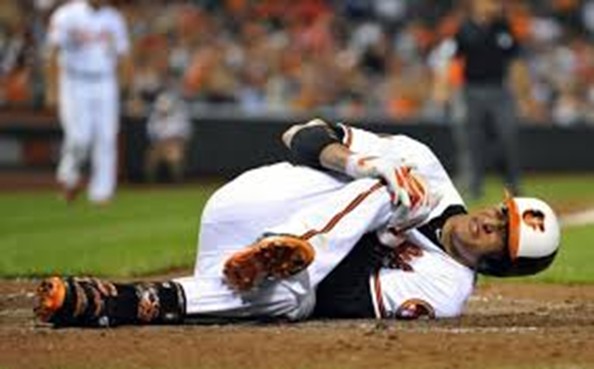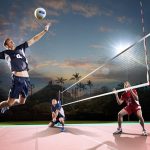Baseball blends repeated overhead throwing with explosive swings, rapid sprints, slides, and crouched catching positions. Those demands can irritate tendons, strain muscles, or overload joints when workload, technique, and recovery are not well balanced. The scenarios below mirror what clinicians see in everyday practice. Each pair a familiar problem with a practical, evidence-based plan so players can recognise trouble early and return safely.

The Pitcher’s Medial Elbow
Valgus stress during late cocking and acceleration can strain the ulnar collateral ligament and the flexor-pronator muscles. Players notice inner elbow pain, loss of zip, or tingling into the ring and little fingers. First steps are relative rest, ice for comfort, and a review of pitch counts and rest days. Rehabilitation builds shoulder blade control, rotator cuff strength, forearm endurance, and lower-body drive so the elbow is not doing all the work. A phased interval throwing programme follows pain-free testing. If there is instability or recurrent failure, surgical reconstruction may be discussed.
The Thrower’s Tight Shoulder
Deep shoulder ache after throwing, night soreness, or a sense of “pinch” during layback often reflect rotator cuff tendinopathy or labral irritation. Treatment begins with scapular setting, external rotation strength, and posterior capsule mobility. Drills in the scapular plane, trunk rotation work, and hip power reduce stress at the top of the arm. Video review helps correct a late arm, early trunk open, or excessive head tilt. Throw volume is rebuilt gradually, starting with flat-ground work before long toss, then bullpens.
The Oblique Twinge On The Swing
A sudden jab at the side of the abdomen during a hard swing or check swing suggests an oblique strain. Expect pain on rotation, coughing, or sit-up motions. Early care includes rest from painful twisting, gentle breathing drills, and isometric core work. Progress to anti-rotation exercises, then controlled rotational medicine-ball work before full batting practice. Do not rush back to maximal swings; quality contact work and pitch recognition can maintain timing while tissues heal.
The Base Runner’s Hamstring Pull
Accelerating out of the box or chasing a fly ball places heavy demand on the hamstrings. A sharp grab high in the back of the thigh is typical. Initial management is relative rest and protected walking. Rehab starts with pain-free range, then bridges and hip hinge drills, followed by progressive sprint mechanics and Nordic curls. Return criteria include pain-free top-speed strides, strong eccentric control, and confident change of pace.
The Bat Sting Wrist And Hand
Vibration from mishits or the knob contacting the palm can irritate the hook of the hamate or sprain small wrist ligaments. Suspect a hamate fracture if there is ulnar-side wrist pain with grip weakness. Rest the hand, use a padded grip or different knob shape on return, and seek imaging for persistent symptoms. Some fractures require surgical excision; most sprains recover with splinting and hand therapy.
Conclusion
Most baseball injuries respond well to early recognition, sensible first aid, and rehabilitation that restores control as well as strength. Small adjustments in workload, mechanics, and recovery habits protect performance across a long season. See an orthopaedic specialist if pain lingers, keeps you awake at night, or interferes with everyday activities. With a clear diagnosis and a staged plan, players can return to the mound, the plate, and the field with confidence.
For enquiries and online appointments, send a message to www.DrAyyappanVNair.com/contact
For informative videos related to Shoulder problems and their treatment options, Sports Injuries and other orthopedic conditions, visit our YouTube channel Bangalore Shoulder Institute – https://www.youtube.com/@BangaloreShoulderInstitute
Q & As
How do I judge shoulder fatigue after pitching, and when should I skip my next start?
Use a simple checklist that includes the next-day soreness score, night pain, and ease of raising the arm overhead. Compare ball flight and arm slot during light flat-ground throws. If mechanics feel guarded, do not chase velocity in bullpen work. Persistent loss of external rotation strength or scapular control means you should rest, treat pain, and adjust workload. A 24 to 48 hour recovery window should include sleep, hydration, light mobility, and low-effort cuff drills. If pain lasts beyond 48 hours, or tingling appears in the forearm, seek assessment. Protect long-term availability rather than one extra start.
Is long toss helpful or harmful for pitchers?
Long toss can build arm endurance and feel for ball flight when progressed sensibly. Keep the arc modest, throw with a partner who matches your level, and stop before form breaks down. Alternate with flat-ground work at game-like intensity to integrate mechanics. Use it outside high-volume bullpen weeks to avoid total load spikes. If you feel posterior shoulder pinch, groin pull from over-striding, or next-day loss of external rotation, reduce distance and volume. Pitchers returning from injury should follow an interval throwing plan that sets distances, effort, and rest days, rather than guessing session by session.


